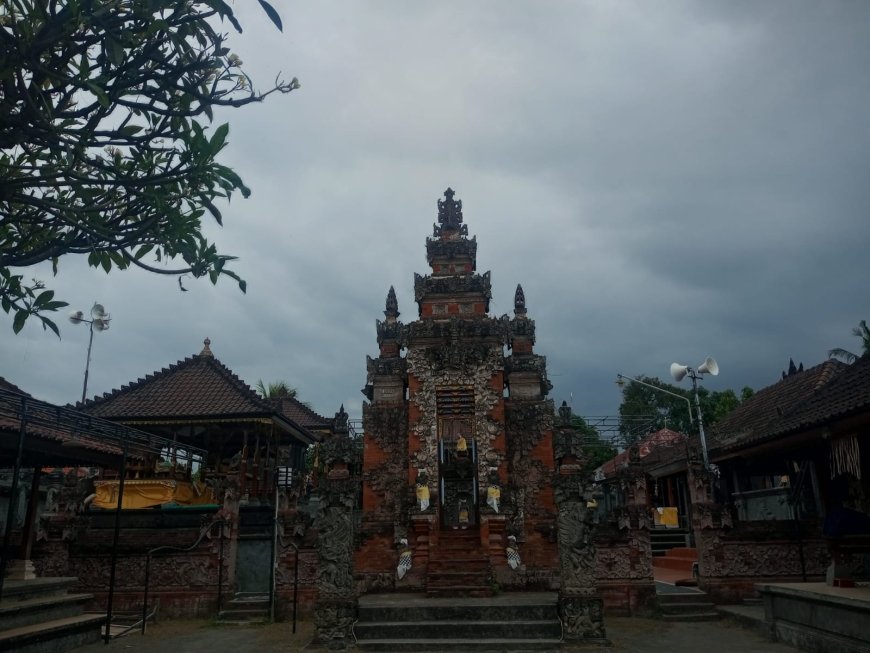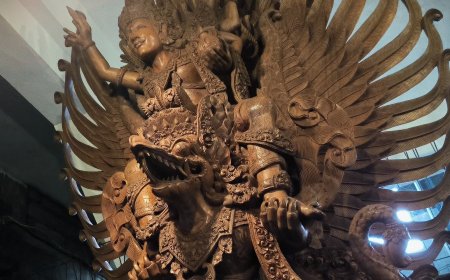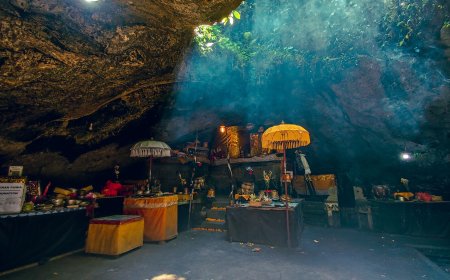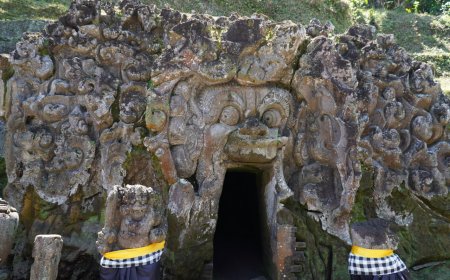Gede Pemayun Temple : a Unique Temple With a Variety Of Traditions
One of the prominent characteristics of the island of Bali is that there are many temples spread throughout Bali as holy places for Hindus. Temples in Bali are known as places of worship for the Hindu religion, one of which is Gede Pemayun Temple which is located in Banyuning Village with various unique features ranging from its long history to various traditions carried out as a series of Piodalan at Gede Pemayun Temple.

The island of Bali, or often referred to as the "Pulau Dewata”, is a place where elements of spirituality and amazing natural beauty come together in extraordinary harmony. One of the prominent characteristics of this island is that there are many temples scattered throughout Bali as holy places for Hindus. Temples in Bali are known as places of worship for Hinduism and also Balinese culture which has been an integral part of Balinese people's lives for centuries. There are many temples spread across various parts of Bali, one of which is in Banyuning Village. Apart from having three heavenly temples, Banyuning Village also has a unique temple called Gede Pemayun Temple.

Nista Mandala Area Gede Pemayun Temple (Photo Source: Persoal Collection)
Gede Pemayun Temple is a temple located in Banyuning Tengah, Banyuning Village, Singaraja, Buleleng, Bali. This temple is divided into three parts, namely Nista Mandala, where in this area there are several sacred buildings, namely Pelinggih Dewa Bagus Mentang Yudha, Pelinggih Dewa Bagus Mentang Penyarikan. Then in the Madya Mandala area there are also several sacred buildings such as the bale gong, Pelinggih Dewa Bagus Prosecutor, Pelinggih Dewa Bagus Shaman. Then there is the most sacred area, namely Utama Mandala, there are several sacred buildings such as Pelinggih Dewa Ayu Tukang, Taksu Agung, Taksu Alit, Pelinggih Ida Bagus Ngurah Semar, Pelinggih Betara Saking Dewa Gede Pengastulan, Pelinggih Dewa Bagus Manik Pulaki, Dewa Bagus Panji which is the Pelinggih Lord Shiva, and the Shrine of Dewa Ayu Agung.

Madya Mandala Area Gede Pemayun Temple (Photo Source: Personal Collection)
Gede Pemayun Temple has a long history. Initially this temple was known as Pasek Kencana Temple which later changed to Pemaksan Tengah Temple, and finally changed its name to Gede Pemayun Temple as it is known today. This happened because many people came to pray there and they came from various different races. This is the reason why the name of this temple changed its name to Gede Pemayun Temple.
The history of this temple is also related to the arrival of Ida Ngurah Panji, he was the first person to come to Banyuning. On his first visit, Ida Ngurah Panji was accompanied by Ida Ngurah Semar, then on his second visit, he came with three of his siblings, namely Ida Ngurah Pasek Made Agung, Ida Ngurah Pasek Kumerdap, and Ida Ngurah Pasek Karangasem.
After a long time in Banyuning, Ida Ngurah Panji wanted his panglingsir status to be considered a father. To make his wish come true, he appealed to Gede Pengastulan Temple. His request was granted, and finally, Pasek Kencana Temple changed its name to Pura Gede Pemayun Temple.
It is said that initially, in Banyuning there were only three temples, namely Pura Pemaksan Timur in Banyuning Timur, Pemaksan Tengah Temple, and Pemaksan Barat Temple or Pura kerta. Pemaksan Tengah Temple, which is now known as Gede Pemayun Temple, has a long history and is believed to have been established since the Bali Aga era, around 700 years AD, before the arrival of Mpu Kuturan to Bali. One of the distinctive characteristics of this temple is the absence of Meru and Padmasana in it. This temple and temple area adheres to the teachings of Shiva.
Gede Pemayun Temple also has reliefs on the side of the temple, the most prominent relief is the monkey relief. This relief has a special story related to the kinship relationship between Gede Pemayun Temple with Gede Pulaki Temple and Gede Pengastulan Temple. Therefore, the monkey relief is believed to be a symbol of this kinship relationship. During the grand odalan at Pura Gede Pemayun, which falls on Buda Wage Klion Ugu, the krama of Pura Gede Pemayun usually perform matur piuning at Gede Pulaki Temple and Gede Pengastulan Temple as part of the ceremony.

Jeroan Area Gede Pemayun Temple (Photo Source: Personal Collection)
Gede Pemayun Temple has a piodalan that falls on Buda Kliwon Ugu. In contrast to temples in general where piodalan lasts for 3 days, piodalan at Pura Gede Pemayun lasts for 5 days where there are many series of events starting from preparation, group prayer to closing.
However, from this series there are several events that are interesting and eagerly awaited by the people of Banyuning, such as the tari kekelik performance, this dance is a sacred dance in Banyuning Village. Usually this dance is performed when the offerings are finished, and during the widening ceremony. This dance is obligatory to be performed during pujawali or piodalan at Gede Pemayun Temple because it is believed to speed up the process of nyajan in order to nedunang Ida Bathara. If it is not performed it will cause undesirable things such as chaos, people's lives that are not prosperous and can even cause gerubug or epidemic. This dance is carried out from the outer area of the temple or nista mandala then to the middle mandala and then enters the main mandala or innards with the meaning of cleaning the area to avoid evil things that can hinder the progress of the ceremony.
Apart from that, there are also several traditions carried out by Banyuning residents for generations, namely the mekeringkering tradition which is followed by mecolek-colekan endut (mud). This tradition has been going on for generations and is followed by the Banyuning people without any age limit, those who follow this tradition You have to be prepared to be covered in mud, because when you see that someone's manners are still clean, both outside the temple and inside the temple, they will be carried to the temple yard and smeared with mud. Everyone involved in this tradition will have fun and rejoice as a form of gratitude because the pujawali or piodalan at Gede Pemayun Temple runs smoothly.
It doesn't stop there, there is another game that has been embedded in the piodalan series at Pura Gede Pemayun, namely mecolek-colekan adeng, the same as the tradition of poking endut, this tradition has also been going on for generations with the same purpose, namely as a form of taste. gratitude and joy because of the smooth progress of the piodalan that took place at Gede Pemayun Temple. This tradition uses adeng which is taken from the back of the pan used when cooking, then the adeng is mixed with coconut oil. When this tradition takes place, the krama are very happy and smear each other's skin, some even chase each other in the temple area. When it is finished, the krama who take part will clean themselves at Candi Kuning which is located in Penglatan Village, they will walk feet accompanied by gamelan gong. This tradition is usually carried out at the end of the odalan series.





























































